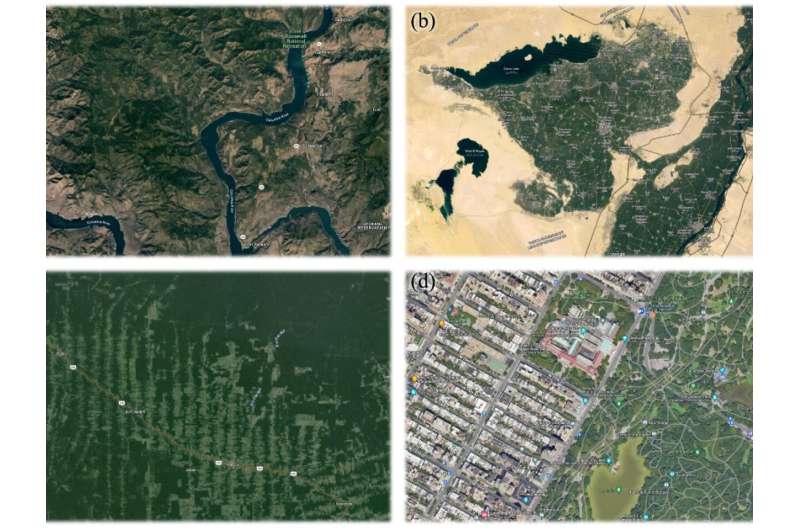This article has been reviewed according to Science X's editorial process and policies. Editors have highlighted the following attributes while ensuring the content's credibility:
fact-checked
peer-reviewed publication
trusted source
proofread
High-resolution land surface dataset provides Earth system modeling details

Earth system models (ESMs) help us understand climate and environmental changes. With advances in computing power, ESMs can now be run at kilometer-scale (k-scale) resolutions, capturing very fine details to better predict extreme weather and understand water, carbon, and energy cycles.
However, current models typically rely on outdated and coarse-resolution (~50 km) land surface data, which can miss important details.
A study, published in Earth System Science Data, developed new high-resolution (1 km) land surface data for 2001 to 2020, including parameters of land use, vegetation, soil, and topography.
The research provides the first comprehensive 1 km gridded global surface datasets to significantly enhance the capability for k-scale ESM simulations. Using the new datasets leads to a more accurate prediction of water, carbon, and energy cycles in ELM2 simulations at 1 km resolution over the contiguous United States. This work is an important step toward k-scale Earth system modeling, supporting the development of better climate change mitigation and adaptation strategies.
The results demonstrate that high-resolution land surface parameters contribute to significant spatial heterogeneity in ELM2 simulations of soil moisture, latent heat, emitted longwave radiation, and absorbed shortwave radiation. On average, about 31% to 54% of spatial information is lost by upscaling the 1 km ELM2 simulations to a 12 km resolution.
Using explainable machine learning methods, the influential factors driving the spatial variability and spatial information loss of ELM2 simulations were identified, highlighting the substantial impact of the spatial variability and information loss of various land surface parameters, as well as the mean climate conditions. The comparison against four benchmark datasets indicates that ELM2 generally performs well in simulating soil moisture and surface energy fluxes.
More information: Lingcheng Li et al, Global 1 km land surface parameters for kilometer-scale Earth system modeling, Earth System Science Data (2024). DOI: 10.5194/essd-16-2007-2024
Journal information: Earth System Science Data
Provided by Pacific Northwest National Laboratory



















